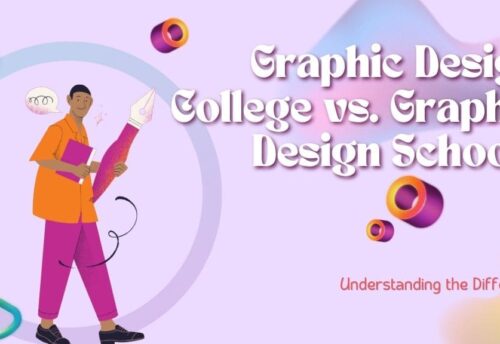
The Psychology of Colors in UI/UX Design: How to Improve User Experience
The Psychology of Colors in UI/UX Design: How to Improve User Experience In UI/UX design, colours are very essential as they can influence user perception, emotions and what they decide to do. A good color scheme has the potential to increase usability, set the required emotional state, and enhance the user experience. Color plays a significant role in the work of a graphic designer, as their main task is to create appealing designs that carry the brands message. Whether you are looking to take up something like a graphic designing course or you already are into a graphic designing career, understanding color psychology can level-up your designing skills.
In this blog, we will be going through the Importance of colors in UI/UX designs and how can we use them to make the user experience better.
There are examples of color theory to give you an idea of what color psychology cycle is and how it works:
Color psychology is the study of the hues as a determinant of human behavior. Due to the psychological effects of color, they are a strong tool of user interface (UI) and user experience (UX) design. An expert graphic designer chooses colors thoughtfully to make user experience more intuitive and engaging.
Colors in UI/UX design can be used in the following ways:
- Effect the way a user will see: what they will see to them.
- Do better at usability and readability.
- Enhance brand identity and recognition.
- Exciting: Establishes emotional bonds with users
- Psychological Reactions to Colors
Full of symbolism, colors evoke different feelings and associations. Here’s a summary of how various colors influence user experience:
RED—ENERGY, PASSION, AND URGENCY
It is a strong and energizing color — red. If you need something with a little more pizazz, orange simply radiates excitement and is heavily used for call-to-action buttons, sales promotions and error messages.
Best used for:
- Call-to-action buttons (e.g., “Buy Now” or “Subscribe”)
- Error alerts (ex: it looks like there is something wrong)
- Encouraging impulsive actions
Blue – Trustworthy, Reliable, and Calm
For this reason blue typically is used in corporate and tech industries. The color is popular in UI/UX, as it achieves a feeling of security and professionalism.
Best used for:
- Financial apps and websites
- Social Media Platforms (e.g., Facebook, LinkedIn, Twitter)
- Backgrounds and navigation elements
Green – Growth, health, and tranquility
Green represents nature, growth, and health. For eco-friendly brands, financial success, and relaxation — It’s commonly used in UI/UX design.
Best used for:
- Health and wellness apps
- Websites about environmental issues and sustainability
- Success message (e.g., “Payment Successful”)
Yellow — The Color of Optimism, Joy and Attention
Yellow is an attention grabber that increases mental activity and generates energy. But too much usage can leave you with visual fatigue.
Best used for:
- Emphasizing salient features
- Fostering imagination and goodwill
- Youthful and fun brands
Orange – Creativity, Enthusiasm and Friendliness
Orange is a warm color that is a combination of the energy of red and the happiness of yellow. This is used to make an experience warm and welcoming.
Best used for:
- Websites that facilitate e-commerce (the “Add to Cart” button on Amazon)
- Interactive elements and calls to action
- Websites related to entertainment and food
Purple – Power, Imagination, Knowledge
Purple is a color that corresponds to luxury, creativity, and spirituality. High-end brands and creative business use it broadly.
Best used for:
- Beauty and cosmetic brands
- Websites with a creative and artistic vibe
- Premium subscription services
Black: Sophistication, Elegance, and Power
Polar Blue color grab all the attention to itself. It is regularly employed in luxury fashion and tech brands.
Best used for:
- Luxury and fashion brands
- Minimalistic UI designs
- This is the second most general type of high contrast.
White — The Color of Purity and Simplicity
White is linked with minimalism and clarity. One of them is to make a positive space and space that is open and apparent in appearance and widely used in UI/UX design to make it easier to read text and focus on the target user.
Best used for:
- Handling of backgrounds and whitespace
- A minimalistic and clean UI design
- Guides for healthcare and technology websites
Best overall design practices for UI/UX design
Now that you have a better sense of how colors affect emotions, here are some best practices for using them in UI/UX design:
Establish a Color Hierarchy
Leverage color hierarchy to draw through users’ attention. Use primary colors for important actions (like: CTA buttons) and supporting secondary and neutral colors for usability/ readability.
Maintain Brand Consistency
Color plays a critical role in brand identity, and using it consistently is necessary for a strong brand. Color choices should resonate with the brand’s values and message.
Consider Accessibility
Design for accessibility–it should be usable to all users including the impaired. High-contrast color combination and test its readabilty using WCAG (Web Content Accessibility Guidelines)
Experiment with a Variety of Color Choices
Try out different color schemes and get feedback from users. You can use A/B testing to figure out which color combinations get the most engagement.
Colors — Evoking The Right Emotions
Select sleek colors where the emotional response to their effect corresponds to what the user is intended to feel. For instance, a finance app can use blue for trust, while a fitness app may be green for motivation.
Graphic Designing: Boost Your Career for Success!
Pursuing a graphic designing course will open up the world of UI/UX design for you if you like to work with colors and design. One of the cornerstones of graphic design is the subject of color theory, which teaches how to use colors effectively in both digital and print media.
Conclusion
Hex and RGB codes can also be used as they are representations of colours with different metrics. As a graphic designer, the use of colors is challenging but a precise and well-planned to make a design more appealing to the eye. The right color choices can enhance user experience and brand perception whether you are designing a website, mobile app, or marketing materials.


